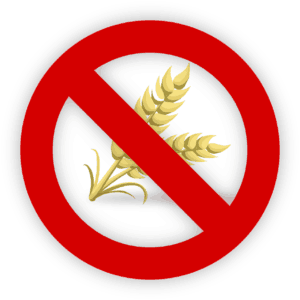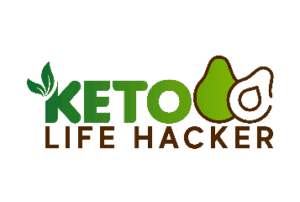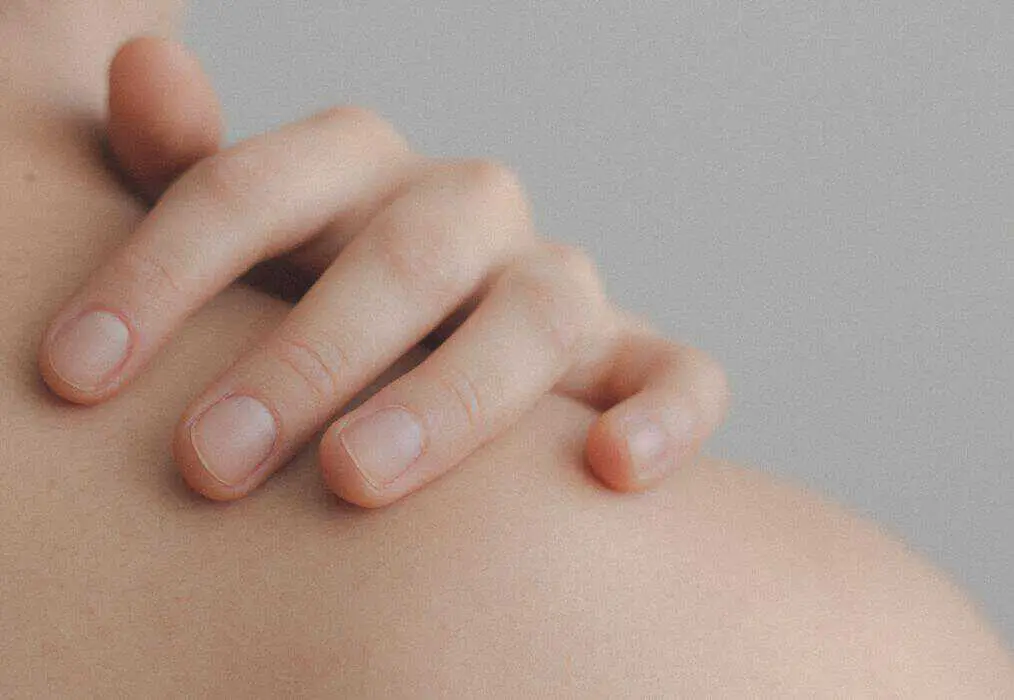The keto diet is a great way to help you lose weight, gain mental clarity, and help your body operate a lot more efficiently.
However, switching to the keto diet tends to have some drawbacks and side effects, which vary from person to person.
As many know, the keto flu is one of the big fears of a lot of people starting the keto diet, but there are other side effects that can be even more annoying, such as keto-induced hives and rashes.
What’s the Difference Between Hives and Rashes?
Generally speaking, hives are typically characterized as raised red and splotchy areas that are usually the result of an allergic reaction to something that the skin has come in contact with, or from something that a person has ingested.
A rash on the other hand is typically characterized as one or more red or discolored areas of the skin and tends to be more uniform in shape. Both rashes and hives tend to be very itchy, and both can be results of switching into a state of ketosis.
Symptoms of Keto Rash
A keto rash will usually come on with some pretty clear symptoms. The most frequently experienced symptoms include redness on the skin, as well as an uncomfortable and constant itch around the area that is red.
In most cases, this rash tends to come up around the neck and torso, but it can manifest into more serious cases of hives and rash around the face, arms, and legs.
Some usual diet related rashes also have these common symptoms:
- Red spots, known as papules, that form a web-like appearance (these are often confused for hives)
- Redness and itching that spread to the upper back, chest, and abdomen
- A dark brown pattern that is left on the skin where the redness once was, even after the itching sensation is long gone
The symptoms of the keto rash are generally spread across four main phases, which include:
-
Early lesions
During this phase, people tend to notice just some light, pink discoloration of the skin, with a tame itch that sometimes accompanies it. In most cases of keto rash, this tends to be just overlooked as a random rash, and isn’t usually thought of as diet-induced.
-
Fully formed lesions
At this part, it becomes evident that something is likely wrong with the skin, as the lesions have gotten much worse, and may have started to form those web-like papule structures akin to hives. in some rare cases, these papules irritate the skin so much that you may need to see a dermatologist, but keto rash usually dissipates over time if the right precautions and dietary tweaks are made.
-
Improving lesions
At this stage, the papules start to recover, and the rash starts to die down. During this stage, the itch finally starts to subside, and will eventually be gone before the rest of the rash has disappeared.
-
Remaining lesions
At this point, the itch has fully subsided, and the skin just has a darker pigmentation where the rash used to be. To some this might be alarming, but this stage is the least harmful, and the skin will likely regain its old pigmentation in a matter of days.
The exact duration of the rash or hives really depends on the exact cause. I’ve heard of cases only lasting from a couple days to a week, to over a month depending on the severity, any other complications (such as allergies or other pre-existing conditions), and dietary deficiencies like not getting enough important vitamins and minerals.
With the keto rash in particular, it’s often known to emulate that of the eczema rash, and tends to come on within the first two weeks after switching diets. However the diet isn’t always the cause of the rash. I’ll explain some of the most common causes of this occurrence below.
Causes of Keto Rash
There are a variety of potential causes and triggers for the keto rash. Some of these include external factors that are really beyond that of the diet, but the diet can present a few causes too. I’ll break each of them down here:
-
Toxic Bile
Bile is generally a healthy part of our digestive system, and is used to digest fats so that they can be efficiently processed within the small intestine and get rid of the toxins that have already been processed by the liver.
When first starting out on the keto diet, the rapid rate of increased fat consumption can quickly trigger a release of congested bile that ends up dumping these toxins from the liver straight into the digestive tract. This can result in a variety of digestive problems associated with the ‘keto flu’, but it can also directly affect your skin in the form of a keto rash.
-
Increased acetone secretion and irritation
When your body is in a state of ketosis, it produces ketones within your blood stream, which are converted alongside fat to help efficiently burn off body fat and stimulate weight loss.
However some people have a particular irritation to the introduction of ketones in the blood stream, and that’s because of acetone. Acetone is a specific type of ketone body, that is usually excreted through your sweat. Acetone is most commonly linked with body odor or the infamous keto dry mouth and bad breath.
When your body enters a state of ketosis, you’ll sweat a lot more than usual, meaning you’ll be excreting a lot more acetone than your body might be used to. As a side effect, your body might start to form a rash, particularly around the areas that you sweat more, such as the back, abdomen, armpits, and forehead.
-
Excessive fasting
Many studies have discovered a link that exists between fasting and the keto rash. Fasts, such as intermittent fasting, are very popular on the keto diet, as they help moderate hunger and stimulate weight loss, but they can have unwanted side effects.
One study’s results found that 50% of patients developed the keto rash after fasting while on a keto diet. The determination between this correlation was that because blood sugar levels are low during fasting, patients’ bodies entered into ketosis at an accelerated rate, and caused a rash
-
Intestinal dysbiosis
Intestinal dysbiosis is essentially just an imbalance of gut bacteria. When entering the keto diet, it has been observed that people are more likely to see decreased levels of healthy bacteria, in place of unwanted bacteria. This bacterial imbalance leads to more toxin production, and decreased toxin filtering, which results in skin irritation like acne, hives, and rashes.
-
Poor bile flow
Even if your body’s bile doesn’t turn toxic from a rapid influx of fats, one study found that flow of the bile can still cause problems for those new to the keto diet. Even without an increase of toxins, the increase of fats in the digestive system can put a lot of stress on the gallbladder and liver, resulting in a rash.
How to Treat Keto Rash

Unfortunately there isn’t a lot of concrete evidence on the exact cause of keto skin conditions, and that’s largely because of so many other factors that go into it as you’ve seen above. However, there are many steps you can take to treat and cure keto hives and rashes:
-
Make sure you’re getting the right nutrients
As I mentioned earlier, one of the big causes of the keto rash is simply a result of not getting the right amount of nutrients. Some that people usually don’t get enough of, especially when first starting out with the ketogenic diet include magnesium, potassium, calcium, vitamin B-12, vitamin A, and vitamin C, all of which are also commonly linked to skin conditions like acne, rashes, and hives,
Fortunately, these can all be added to your daily routine with multivitamins and over the counter supplements.
Read More: How Much Magnesium Should I Take for Keto?
-
Take fish oil supplements
Fish oil supplements are another great way to get all of the nutrients you need on a keto diet. They’re a great source of Omega-3 fatty acids, which is the type of fatty acid that you should really be striving to increase your intake of on keto, in order to combat the naturally higher levels of Omega-6 fatty acids within your body and almost all high fat foods.
Fish oil has also been found to reduce inflammation, which has been linked to relieving the symptoms of specific kinds of skin conditions.
There’s a lot of different types of fish oil supplements on the market today, with wildly varying prices. Here are some of my favorite brands, which I usually find for cheap on Amazon.com
-
Consider ramping up carb intake
While it’s antithetical to the keto diet, part of why the rash has come on might be in part due to the fact that you’ve staved off carbs too quickly and too intensely. Every body is different, and those that are used to a traditional American diet (Between 150 and 300+ net carbs per day) might have an extremely difficult time adjusting to below 30 or 20 net carbs per day.
Consider raising your net carb amount (by just a little) and see if symptoms start to subside. As your body becomes more fat adapted and used to ketosis, you can start to train it by weaning yourself off moderate carb intake back into an ideal macro ratio.
-
Avoid food allergens (elimination diet)
While the keto diet has been linked to a resulting rash and hives, it’s entirely possible that a food allergen could be causing these symptoms entirely independent of ketosis.
When a lot of people switch to a keto diet, they tend to try a lot of different foods with a lot of different ingredients that they may have never had before, at least in the same quantities. This could mean that you might just be discovering a new food allergy, rather than a side effect of the natural keto diet.
Some common types of foods that trigger allergies in people include: eggs, full-fat yogurt, certain types of fish like tuna, salmon and sardines, tree nuts, and pea nuts.
If the allergies aren’t too severe and are limited to just the skin condition, a good way to test for allergies is via the ‘elimination diet’, in which you should try to remove these allergens individually one at a time for a few days, to see if symptoms subside. If they do for one specific ingredient, you’ve likely found your allergen.
-
Try using Selsun Blue Shampoo
While normally reserved for dandruff and itchy scalps (non-rash related), Selsun Blue Shampoo can be used to help with the same type of properties of the keto rash. It won’t exactly cure the keto rash, but it has been proven to reduce the symptoms, namely the itchy sensations.
I prefer to use the Selsun Blue with Aloe Vera Shampoo, because the added aloe vera helps with the peeling and redness on the skin, while the active ingredients in the shampoo focus on the itch.
-
Increase probiotic intake
As I mentioned earlier in this article, an imbalance in healthy gut bacteria can be a primary cause of this type of skin irritation. Introducing keto-friendly probiotics like kimchi, sauerkraut, and kefir can really help restore that balance with your gut’s flora and fauna, and overall improve your digestion by reducing nausea and improving bowel movements.
If you’re not a fan of fermented foods, you can easily supplement this as well. I don’t always have time to make or buy keto-friendly kimchi, so I tend to rely on the brand Vitamin Bounty Probiotics.
-
Talk to your doctor about skin care prescriptions
When dealing with a new diet, and especially unwanted side effects of a new diet, it’s best to consult with a doctor, because they’ll have your full medical history, and will know what other signs to look for.
If you’ve tried almost everything, and are still struggling with the rash, it may be something more than just a keto rash, and you should consider taking prescribed skin care medications for conditions like eczema and allergies.
How to Prevent Keto Rash
As great as a lot of the above solutions are, preventing the keto rash is always the best option to save you time, money, and spare you any discomfort on top of an already stressful dietary transition.
Some effectives ways to prevent the onset of keto hives and rashes include:
-
Avoid sweating
Sweating of course is one of the big causes of the keto rash because of the increased acetone that comes up through your pours. Now it’s important to exercise on the keto diet, but there are a lot of easy precautions to take to avoid over-sweating on keto. Always remembering not to overdress, where light clothes, limit your time in direct sunlight, and avoid friction from tight fitting clothes are great starts.
-
Avoid Stress
There are a lot of ways that the keto diet can cause unwanted amounts of stress. From a biological level, the keto diet has been linked to adrenal fatigue, and from a mental and physiological level, your body and mind can expect a lot of stress when adjusting to a new and challenging diet.
Some good ways to start avoiding stress include meditation, breathing exercises, and engaging in relaxing activities like listening to music and reading books.
-
Ease into keto slowly
There’s no need to start keto fully if you’re going to hurt yourself. Complications with the keto diet from starting too quickly are one of the most frequent reasons people cheat or abandon keto altogether. It’s important to remember that this diet isn’t a quick fix, and should be thought of as a marathon, not a sprint.
If you’ve never done the keto diet before, and are coming from a pretty carb-dominant diet, it might be good to take a few weeks to months to slowly drop your carb intake little by little. Before I was versed in keto, I started by tracking my carbs and trying to hit 150 net carbs per day (a ton, I know, but I was probably eating 300+ before I started my weight loss journey and tracking).
From there, try lowering your intake to 100 net carbs per day, then 75, then 50, until your body gets more used to the higher amounts of protein and fat, without flooding your system early on.
Final Thoughts
Generally, keto hives and rashes don’t tend to stick around for long, and if they do, you should definitely reach out to a doctor to see if it could be something else causing your discomfort.
While the keto diet might seem scary, there’s still plenty of ways to ease into it and make it manageable.
Do you have any tips for managing and treating keto rashes and hives that I may have missed? Leave them in a comment below. I’m always looking for more ways to help people trust in the keto diet, and not get bogged down by unforeseen side effects.

